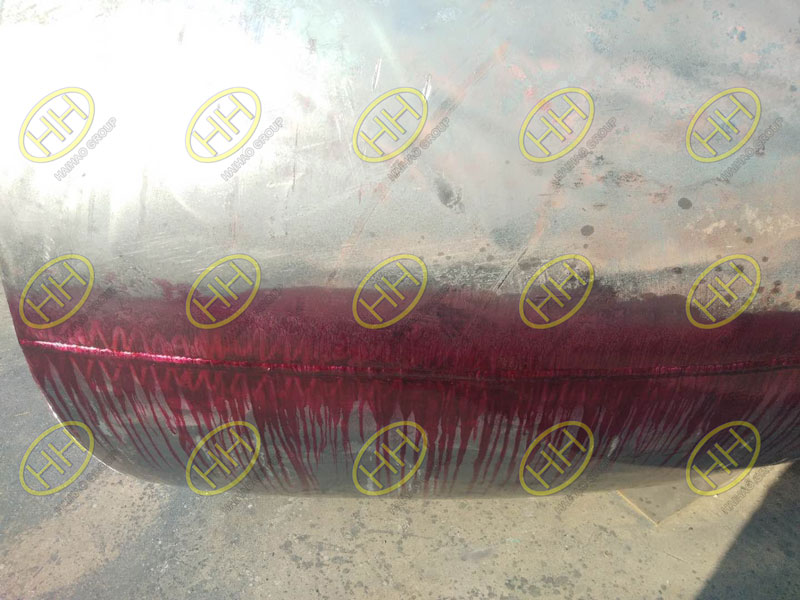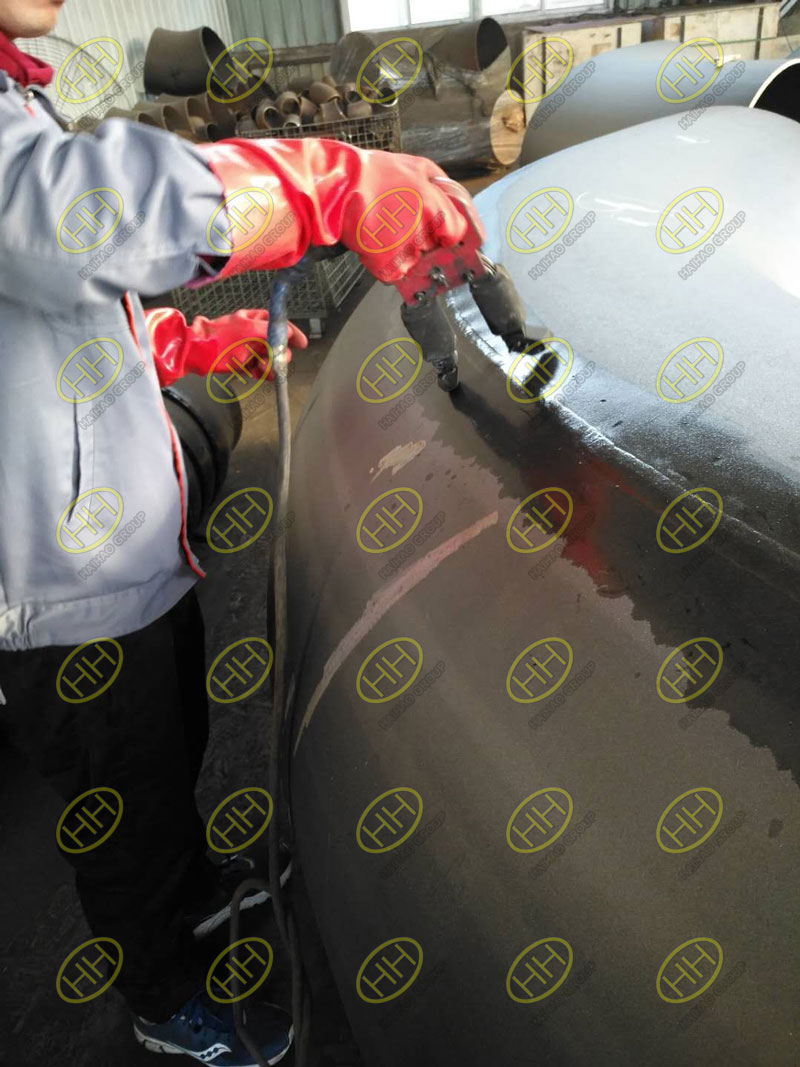How to perform a surface crack detection?
To assure weld quality, all welds should be inspected. In some cases, the inspection involves nothing more than a visual examination by the welder. However, a good-looking weld does not always ensure internal quality, so it’s important to conduct some form of nondestructive testing (NDT), also commonly referred to as nondestructive examination (NDE), is necessary.
In this article, we’re going to explore the surface crack detection technique, including two of the most common methods for executing this technique.

Penetrant testing or dye penetrant inspection or liquid penetrant inspection for large caliber elbow weld
Liquid penetrant testing (PT)
Liquid penetrant testing, sometimes referred to as dye penetrant inspection, is one of the most commonly used surface crack detection methods.
This type of testing is limited to the detection of surface-breaking discontinuities, or
discontinuities that are open to the surface where the penetrant has been applied. It can’t detect discontinuities that are sealed within the body of the weld, such as internal porosity or fusion defects. It’s not usually suitable for testing rough or porous materials because interpretation of the test results can be hindered by false indications.
When compared to unassisted visual inspection, this type of inspection is more likely to detect smaller and finer surface-breaking discontinuities, such as hairline cracks and micro surface porosity. This type of inspection may be suitable for both ferrous and nonferrous materials.
Liquid penetrant testing is done with either “visible dye” or fluorescent dye.
With fluorescent penetrant inspection, a highly fluorescent liquid is applied to the surface of the inspection area(s). A developer is then applied to draw the penetrant to the surface, and then a black light is used to inspect the weld. The high contrast between the fluorescent material and the object allows the inspector to detect traces of penetrant that indicate surface defects.
With a visible penetrant inspection, the process is the same; however, instead of fluorescent dye, a highly visible, colored dye is used with a white developer, which makes any contrast visible under regular light.
To perform a liquid penetrant test, follow these steps.
1.) Clean the area of the weld where the inspection will take place. Allow time for the area to dry completely.
2.) Apply the dye penetrant by spraying, brushing, or dipping the weld into it.
3.) Let the dye sit and fully absorb into the surface. This can take anywhere from one to three hours, depending on the level of detail on the weld.
4.) Carefully remove any excess penetrant using a solvent or a water wash.
5.) Apply your developer.
Once you have completed these steps, you will be able to detect any penetrant bleed out from within discontinuities.

Magnetic particle testing for large diameter elbow welds
Magnetic particle testing (MT)
This testing method consists of establishing a magnetic field in the part to be tested and applying magnetic probes to its surface, which will attract any particles to the magnet ends or poles. Accumulations of these particles indicate discontinuities.
It’s important to note that magnets will attract materials only where the lines of force enter and leave the magnet at the poles. If a magnet is bent and the two poles are joined so as to form a closed loop, no external poles will exist, and consequently, it will have no attraction to magnetic material.
This is the basic principle of magnetic particle testing. If the part has no cracks or other discontinuities, magnetic particles will not be attracted, and you’ll know your weld is without surface cracks.
Only ferromagnetic materials can be tested by this method. Ferromagnetic parts that have been magnetized during testing may retain a certain amount of residual magnetism. Certain parts may require demagnetization if they are to function properly in service.
Magnetic particle testing is used to detect cracks, porosity, seams, inclusions, lack of fusion, and other discontinuities in ferromagnetic materials. Surface discontinuities and shallow subsurface discontinuities are also detected using magnetic particle testing.
Conclusion.
When performing a surface-crack detection, whether with liquid penetrant testing or magnetic particle testing, you should always consult the relevant specification involved for levels of acceptability and qualifications for equipment and operators. These methods of inspection are specialized and should be carried out by suitably trained and qualified inspection personnel.
If you want to learn more about the proper ways to execute a surface crack detection, or if you have a question that wasn’t answered here, please feel free to contact me:sales@haihaogroup.com
